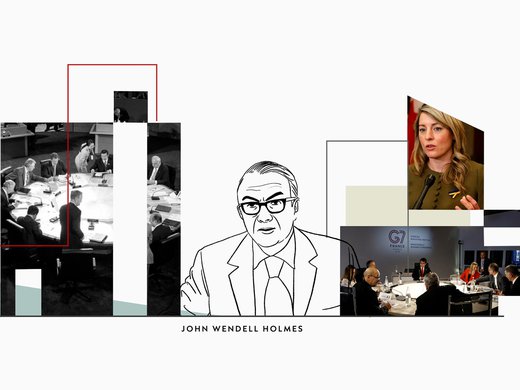Glasgow in April was cool and damp during the 19th Commonwealth Law Conference, but that didn’t stop climate change justice being a hot topic for lawyers, judges and scholars attending a panel featuring Shyam Divan, a Supreme Court of India Senior Advocate and environmental law author, together with this writer.
Legal issues regarding climate change are a key area of my work as a senior research fellow with the CIGI International Law Research Program. During the panel I described the new scientific and legal imperatives for states, tribunals, corporations and financial institutions to take timely and effective measures to mitigate carbon emissions, and I identified historical parallels with the tobacco industry that, together with the growing societal understanding of the dangers of climate change and the urgent need to drastically decarbonize, could likely result in carbon being regarded as a toxic substance and carbon resources as stranded assets.
My presentation also focused on climate change justice and the results of a recent report, Achieving Justice and Human Rights in an Era of Climate Disruption, prepared by a task force I co-chaired last year for the International Bar Association.
The report examines a wide range of legal systems which could interface with environmental quality — such as international trade law, investment law, human rights treaties and commissions, international migration law, domestic and international environmental law, and the law of state responsibility. The Task Force found that international and most national legal systems have significant problems in providing climate justice, and provided over 50 detailed recommendations for significant changes to international as well as national legal systems that would increase their relevance and use for preventing climate change and achieving justice for those most affected by climate change impacts.
Shyam Divan’s remarks explained how the Supreme Court of India has become a powerful third branch of government, making major contributions to climate justice, regardless of legislative and executive inaction. He stated:
"The Indian Supreme Court… in the mid-1970s … discovered a new voice to speak to the people… Amplifying the scope of the right to life (in the Indian Constitution) and emphasizing the nation’s international obligations, the court spelled out the right to a healthful environment…"
Shyam also spoke about how the Supreme Court had promoted public interest litigation to operationalize these rights. He explained that the court, reacting to India’s “national blight”, refused to remain mute; it acted to protect forests from being cleared, improved water quality in major rivers by shutting down polluters, tightened emission standards for vehicles and introduced a framework for municipal solid waste disposal across urban centres. He concluded that the Court embraced important environmental principles to guide its decisions, building a body of environmental jurisprudence premised on the polluter pays principle, the precautionary principle, sustainable development and the public trust doctrine, so as to preserve natural resources for public use and enjoyment. “It is the Supreme Court that raised public awareness about the importance of environmental protection, long before any sustained political or executive initiative.”
Shyam suggested a combination of the new India specialist National Green Tribunal aimed at providing effective hearings for environmental protection, forest conservation and natural resource cases as well as the enforcement of environmental and constitutional environmental rights as found by the Supreme Court “will likely push the executive into framing policies and creating administrative frameworks for climate change related claims and entitlements… Coastal communities may well be able to employ a human rights based strategy to shift to less vulnerable locations. It is also possible to visualize constitutional courts in India directing city administrations and planning authorities to integrate climate change impacts into their planning process, as a matter of human rights.”
If you would like a full copy of Shyam’s paper, (“Through the Eye of an Elephant, An India Perspective on Human Rights and Climate Change”) which contains numerous footnote references to reported Indian case law on this topic, please contact me at [email protected].


